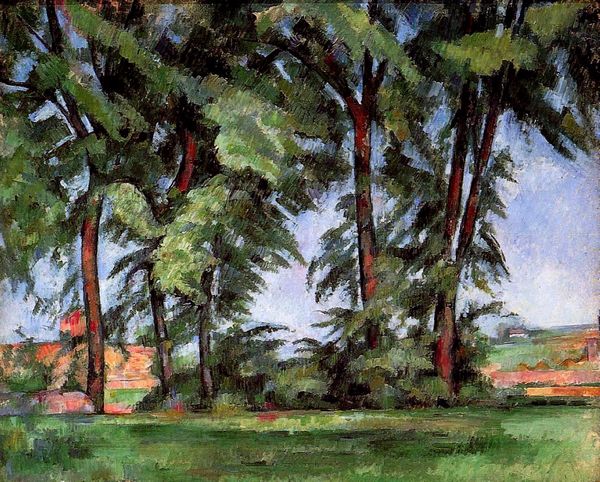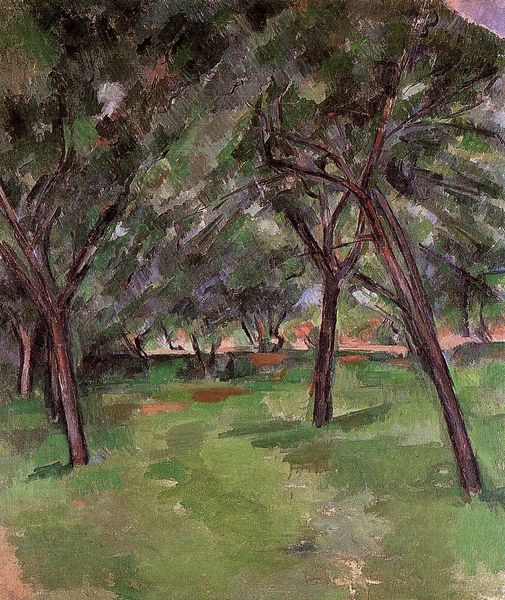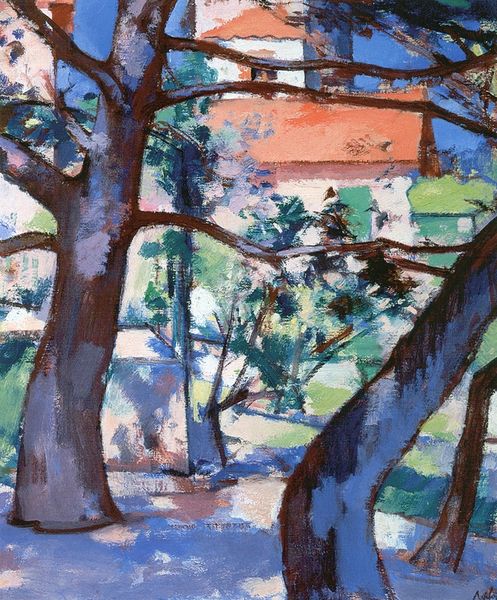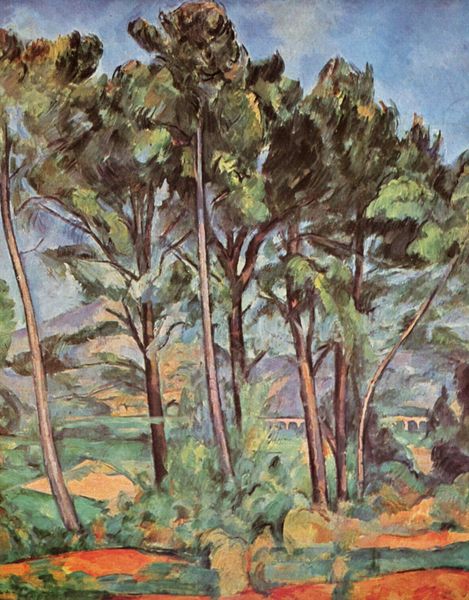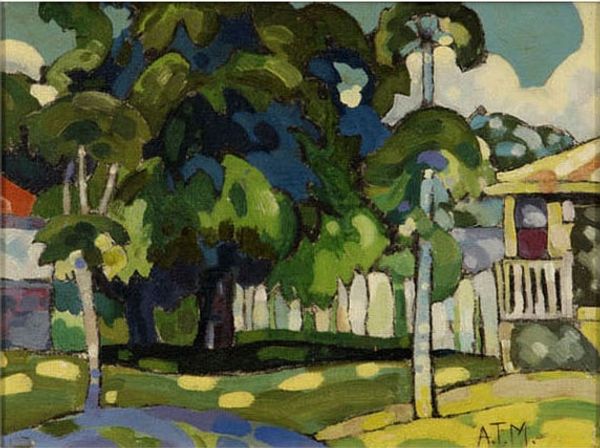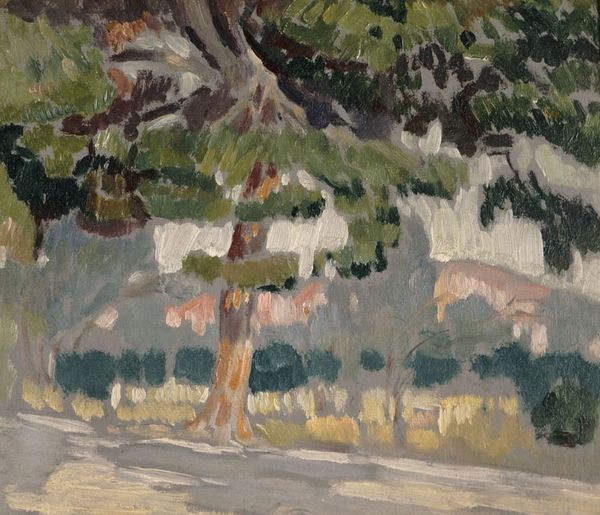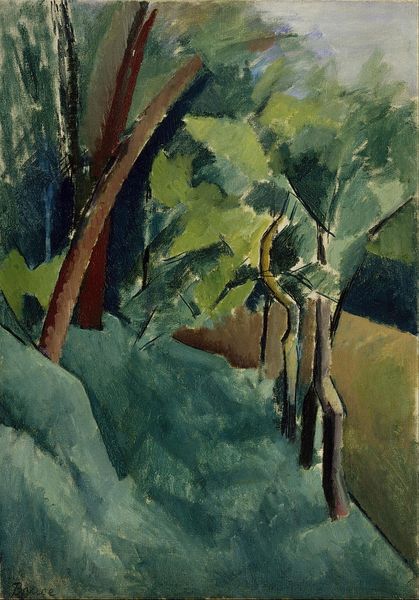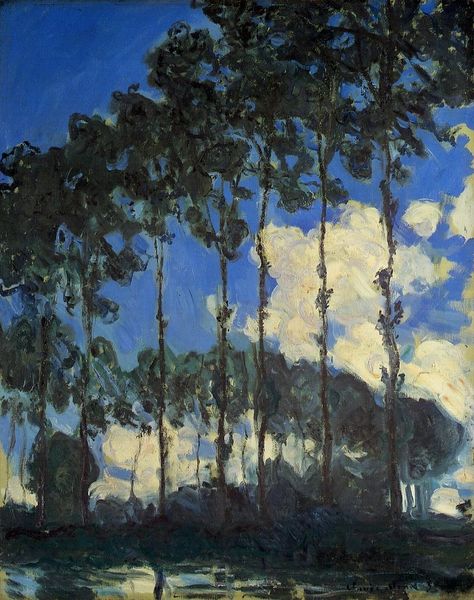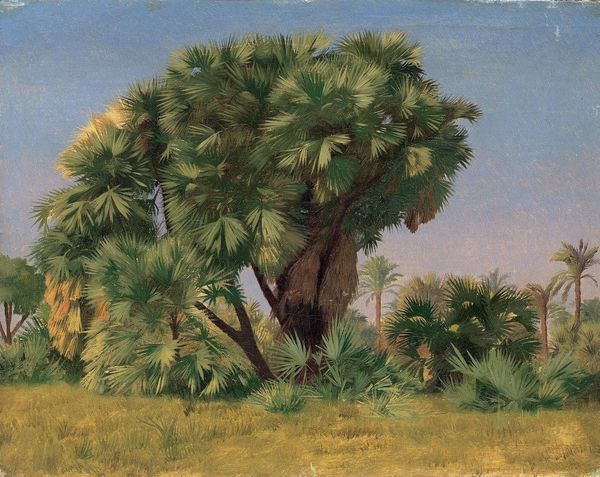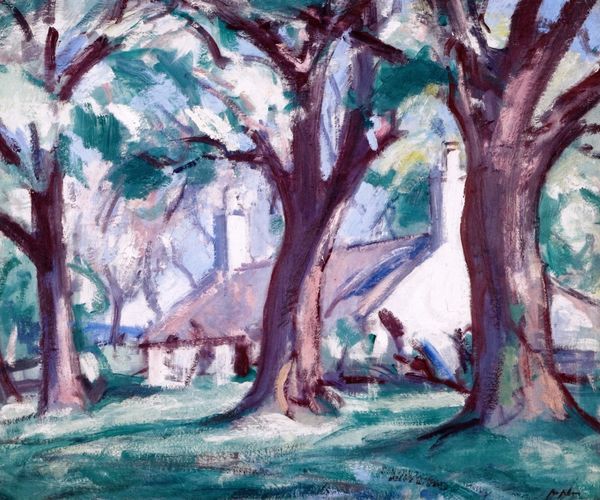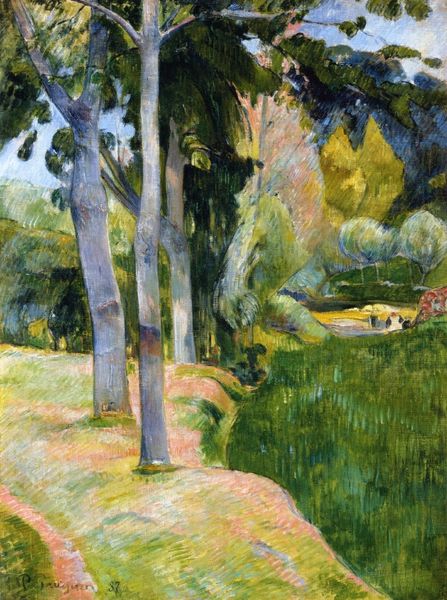
Copyright: Public domain
Editor: Samuel Peploe's "Palm Trees, Antibes," painted in 1928 with oil paint, strikes me as incredibly vibrant. The dappled sunlight and the texture of the palm leaves almost feel alive. What do you see in this piece, beyond the surface? Curator: What stands out to me is how Peploe uses these palm trees as more than just foliage; they become almost totemic. Consider the palm tree’s traditional symbolism - victory, eternal life. What could those symbols mean to Peploe, living and painting in post-World War I Europe? Do you see a yearning for peace and longevity expressed through this choice of subject? Editor: That's fascinating! I hadn’t considered the deeper symbolism. I was more focused on the bright, almost cheerful colors, but thinking about the post-war context shifts the entire mood. It's less of a simple landscape and more of a… hopeful symbol? Curator: Precisely. The vibrant colours are not just aesthetic; they reinforce the symbolic weight. Think of the Impressionists and post-Impressionists: they capture a fleeting moment, but Peploe anchors it. It's not merely a landscape; it's a statement about resilience and hope through the visual metaphor of the palm. The colours and technique pull us towards this message, don’t you think? Editor: Definitely. Knowing that gives the artwork so much more depth. I guess I had reduced it to “pretty colours, nice painting” initially. I realize now the layers of history embedded within it. Curator: Exactly, and every time we gaze upon a work, new interpretations surface with shifting cultural landscapes and memory, that makes looking at art continuously rewarding. Editor: This makes me want to rethink other paintings I’ve seen, and look for the hidden symbolic language, thank you.
Comments
No comments
Be the first to comment and join the conversation on the ultimate creative platform.
